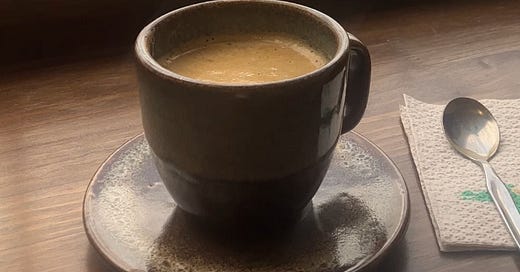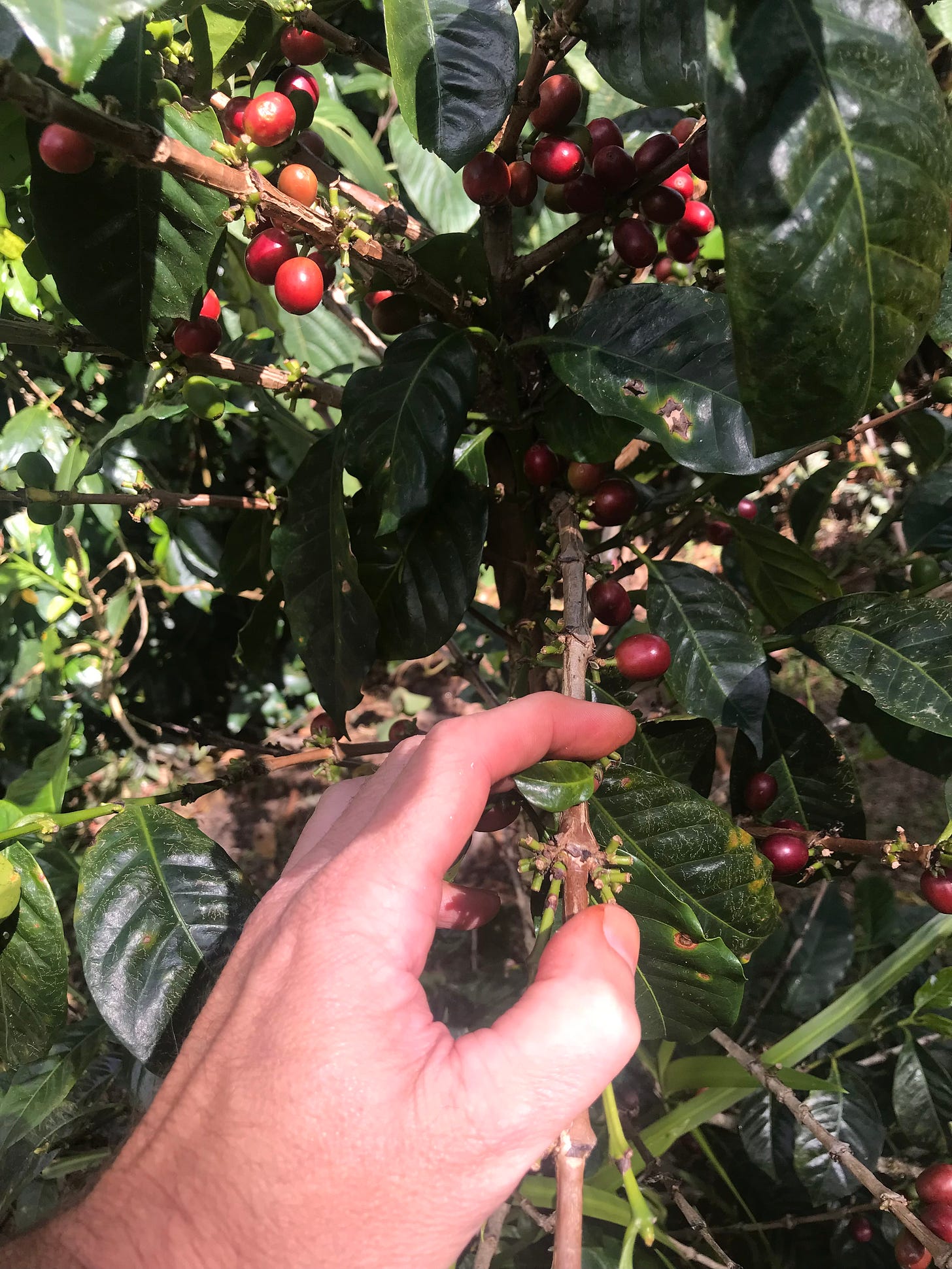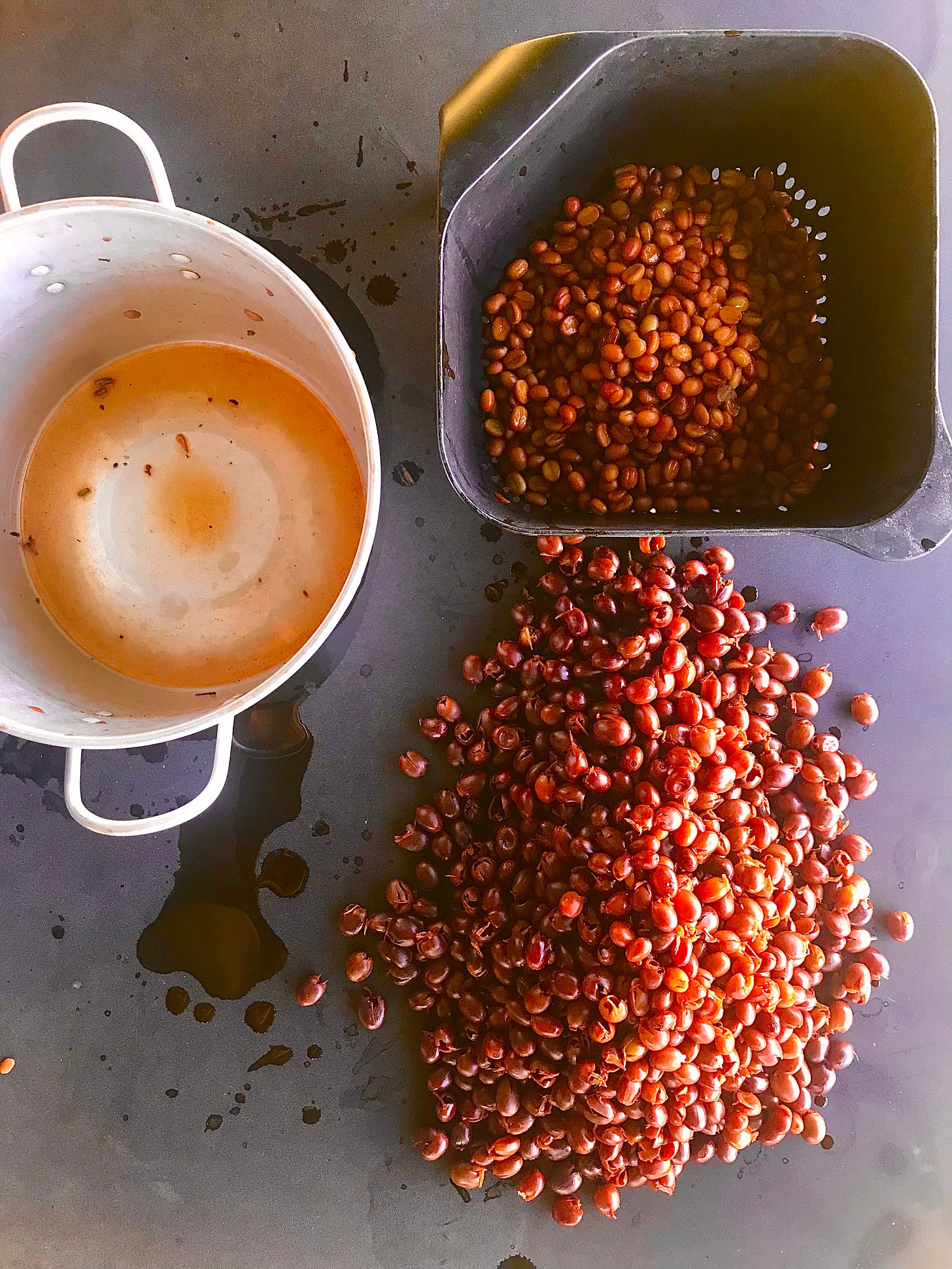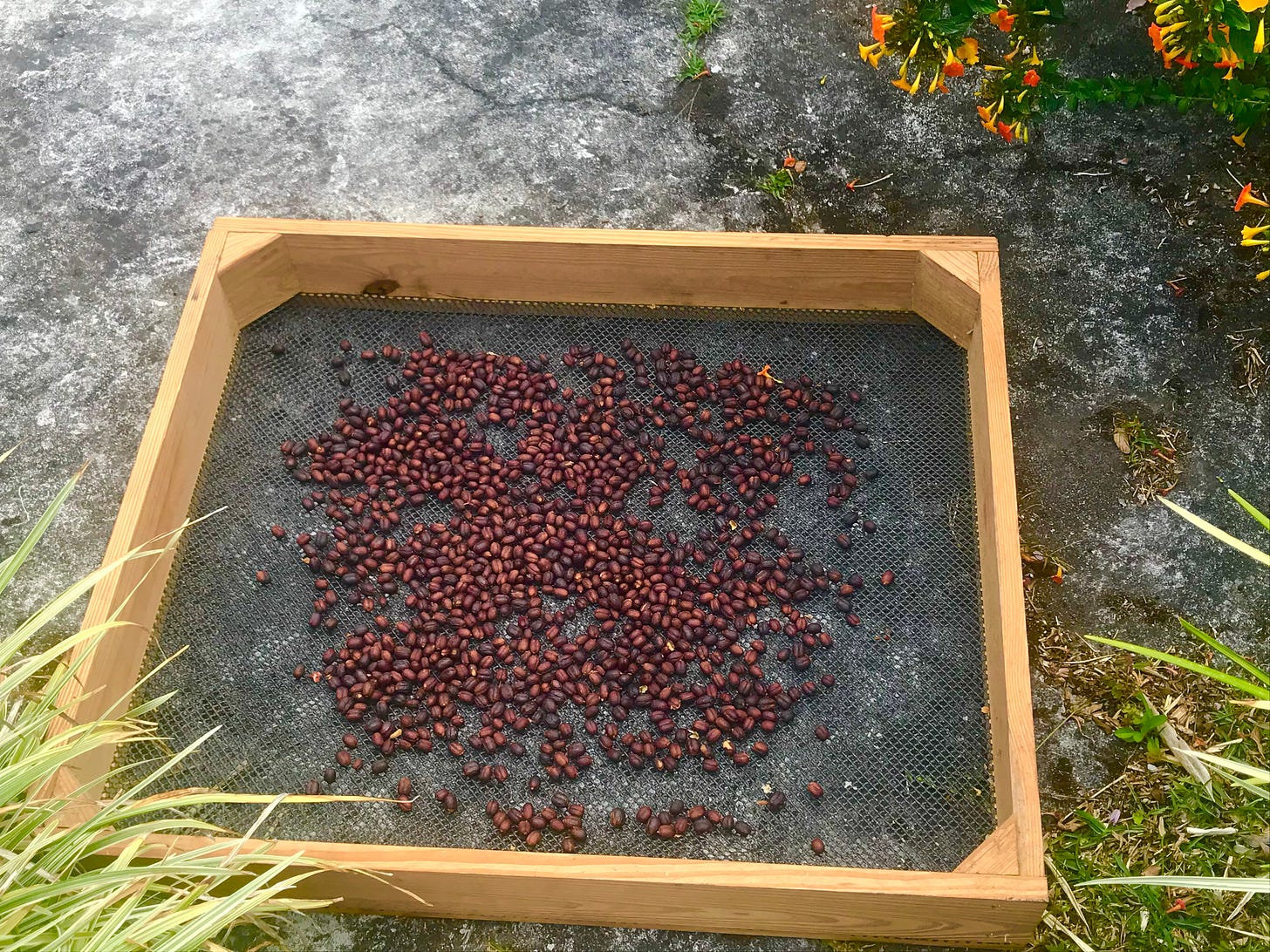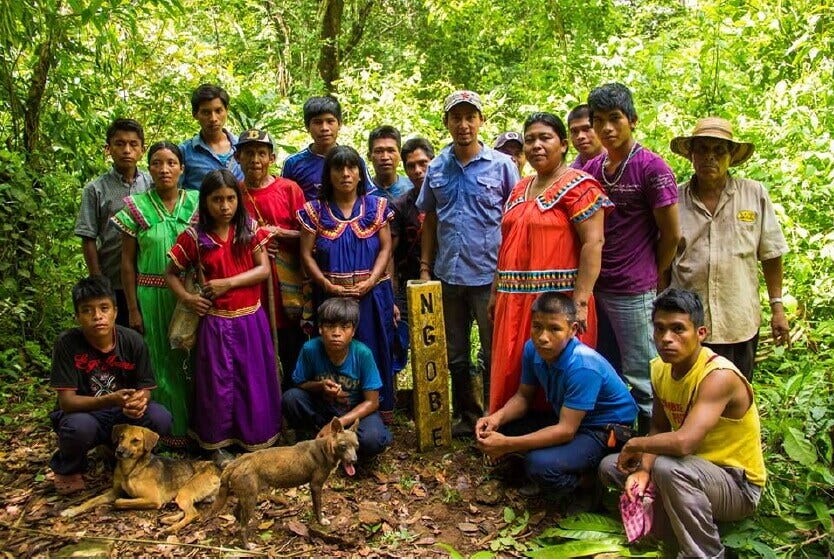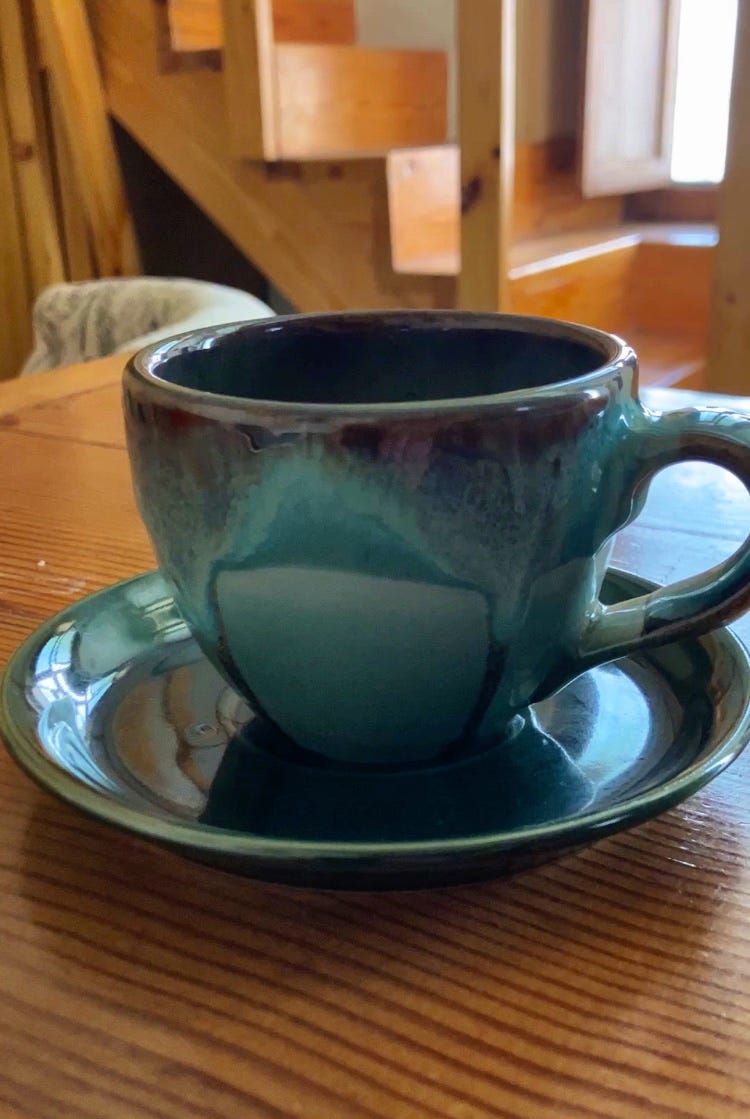I will never look at a cup of coffee the same way again. Over these past five years I have seen and experienced too much.
I have watched patiently in fascination as I learned the mindful art of Japanese coffee from a master of his craft in Kyoto, Japan. He introduced me to the potential for coffee to be treated as a meditative practice. I have been awakened from my sleep by the singing of indigenous workers picking coffee before dawn outside my window in Boquete, Panama, offering songs and laughter as they labored tirelessly. I have spent six months through the seasons of sun and rain, picking and processing my own coffee on a lush mountaintop.
I have lived among the coffee groves in Costa Rica and watched as Nicaraguan workers, including women and children, were driven in by trucks, like cattle standing in crowded packs, to spend twelve hours a day picking coffee to be processed, packaged and sold for a profit they would never see.
I now have firsthand knowledge and a deep appreciation and compassion for the many months, countless people and callused hands that go into one cup of coffee.
I have now managed to find myself in Peru, South America, where I have only further deepened my understanding and appreciation for a delicious cup of coffee and all the many steps that had to happen to bring it to my cup.
In America, one sees varieties of coffee from Costa Rica, Guatemala and perhaps, Panama, however it has been very rare in my experience to see coffee from Peru. Having now tasted coffee grown high in the Andes mountains surrounding Cusco and the region near the Amazon, it is perhaps the most delicious coffee I have ever savored.
If only the average person could see firsthand what goes into the cup of coffee they enjoy each morning as they rush through the drive-thru at Starbucks it just might change their whole perspective on life.
The life-cycle from a bean of coffee to your cup is more than two and a half years before you ever taste that first sip. If one considers the time it takes to grow from a seed to a plant into a plant that is healthy enough to put into the ground, then another two years to grow and ripen into a tree with bright red beans for many workers to pick with their bare hands.
From there it is then processed, taking another six months for the drying and storage process over many days (hopefully without rain) before it is transported and roasted and then shipped to your neighborhood coffee shop.
By going through this entire process myself and also living in parts of the world where some of the best coffee is grown and workers are paid the least, I have had the opportunity to see the world in a cup of coffee.
Getting a glimpse behind the scenes of your morning cup of coffee, I invite you take an extra quiet moment to fully savor and deeply appreciate it as quite literally, the world has gone into your one cup of coffee.
Field Notes
At times I have been reminded of Thich Nhat Hanh’s words on being mindfully present while eating a meal. I can easily apply these to my cup of coffee:
In this food (coffee)
I see clearly the presence
of the entire universe
supporting my existence.
This plate of food (This cup of coffee)
so fragrant and appetizing,
also contains much suffering.
With the first taste, I promise to offer joy.
With the second, I promise to help relieve
the suffering of others.
With the third, I promise to see others' joy as my own.
With the fourth, I promise to learn the way
of non-attachment and equanimity.
The plate ( cup ) is empty.
My hunger ( thirst ) is satisfied.
I vow to live
for the benefit of all beings.
There is an interesting story behind what is now my favorite cup to drink my coffee. When I was in Cusco, I was in a coffee shop and really admired the coffee cups they served in. When I asked the owner where to get them he told me they were made by prisoners in a Peruvian prison where they design art and reintegrate themselves back into society. He told me they were sold in Lima (where I did not live at the time).
When I arrived in Lima I was determined to find the shop so that I could buy one. On one of my first days in Barranco I went into a tiny cafe just around the corner from my apartment. The cafe was filled with coffee ware that had been made by the prisoners.
Of course I bought one for about the price of a cup of coffee in the U.S.
coffee in Kyoto
prepared by a true Master
morning cup of Zen
Haiku written in Kyoto, Japan, 2019
Travelogues
Enjoy four years of past articles from the Zen and Ink Journals journey in the archives.
Published Travel Articles
Enjoy published articles from my last four years of travel.
Subscribe. Donate. Share the Journey.
Zen and Ink Journals represents hundreds of hours of writing over the past decade, sometimes from a train in remote China or a coffee shop in Kyoto, a hammock in Costa Rica or a simple cabin on a mountaintop in Boquete, Panama or Ciudad Colón.
On these pages, I share my observations of kindness and beauty from my adventures in the world and invite you to listen quietly for the call within you to explore the places that beckon your soul.
If you would like to become a regular subscriber, please consider foregoing the cost of one cup of coffee and a pastry each month ($8) and becoming a monthly subscriber.
If you would like to stop receiving emails from Zen and Ink Journals simply click the unsubscribe button at the bottom of this email.

